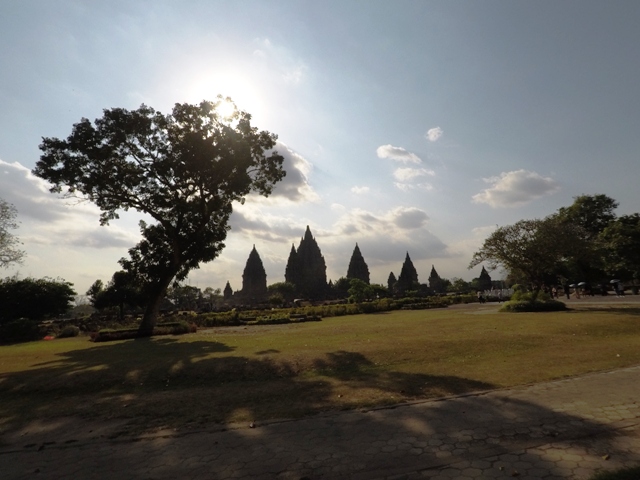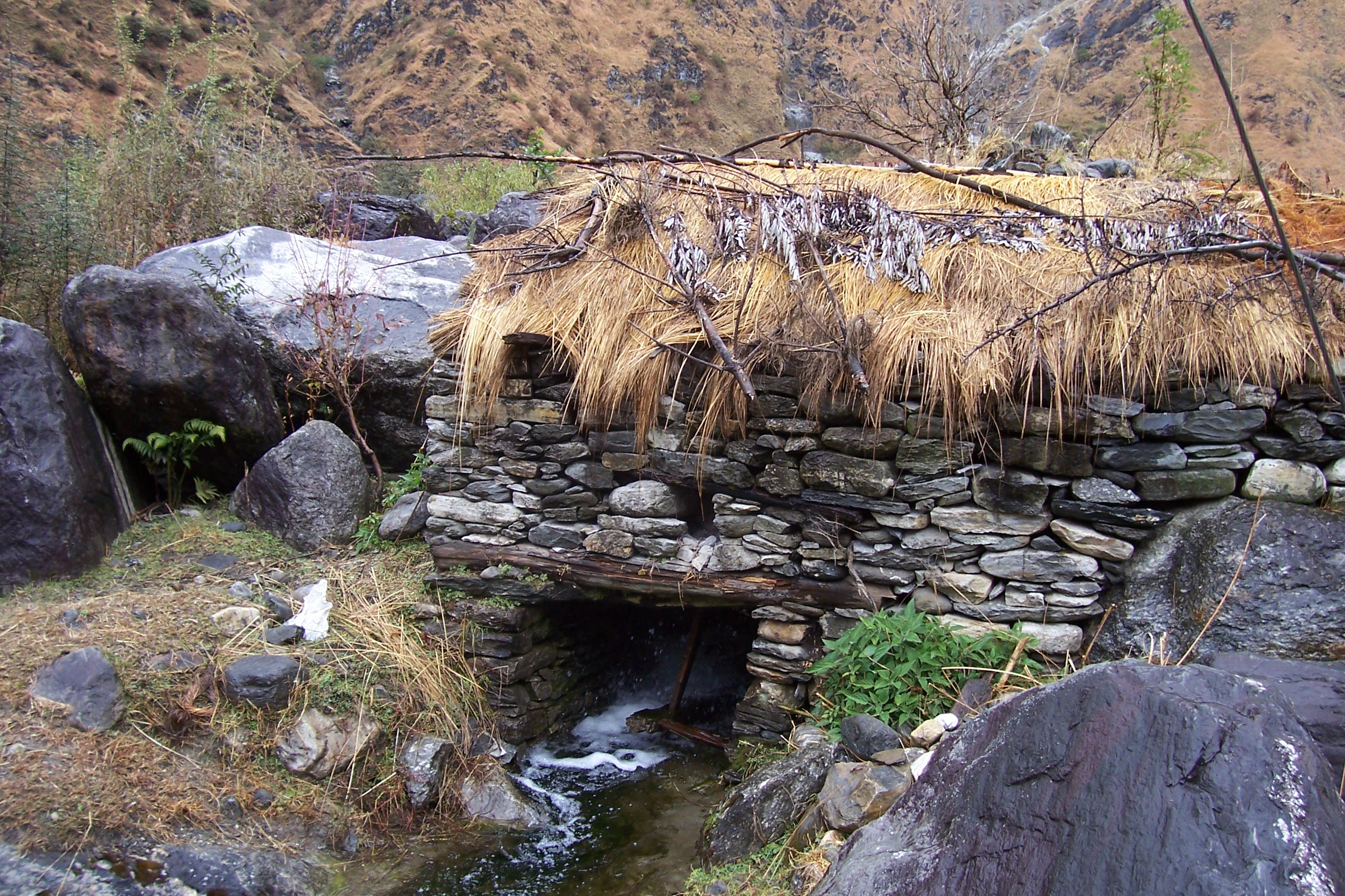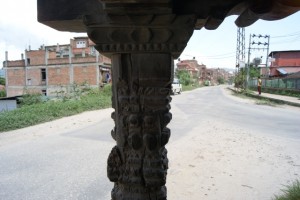
Darting forlorn looks at the placid harmony that would soon be memory, I headed out of Sauraha, the village where I was staying. From Sauraha, I headed to Bharatpur town where the airport was located. The bumpy ride would take close to an hour. Since the flight was only in the late afternoon, I asked the driver if we could take the scenic route – via the 20,000 Lakes. The 20,000 Lakes is slightly less than an overstatement. It is actually a whole area covered by numerous little water bodies, each the size of an Olympic swimming pool. I counted less than a 100; ‘20,000’ sounded like somebody lost count and got a bit exasperated. That was just one version of the nomenclature. The other version is that nobody knows how or from where it got its name. Whatever, the good part is that the place is yet to make an appearance on the tourist map. But on the flip side, the approach road is accessible only by jeeps or SUVs.
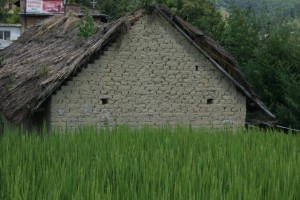
Bharatpur is five hours by road southwest of Kathmandu. By flight it takes less than half an hour. So I reached Kathmandu early afternoon on the day of Teej celebrations. All the women were dressed in blood-red saris with twinkling attachments and other ornamental fineries. Though festivals are almost every second day in Nepal, Teej is among the biggest, most colourful and is celebrated with much aplomb. The guys make way for their women who take centre stage who do so with much gaiety and it is not uncommon to see impromptu dance sessions right on the roadside – to the accompaniment of high pitched singing and clapping. After filling up with pretty women and with a voice gone hoarse wishing every smiling face a ‘Happy Teej’ I decided to take off to a new destination fast rising in stature in Nepal’s tourism map.
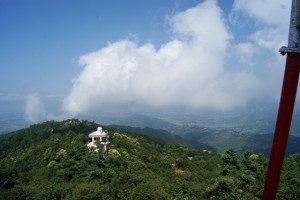
Decades ago, the fields were forests which were cleared for habitation. With increasing traffic between Kathmandu and Nagarkot, the rusticity of the mud houses may not be around for long. Steel and cement buildings rise like unwelcome blots amid the lush green fields. The authorities seem resigned to the grim fact that nothing much can be done with the thousands pouring into the capital and settling down on the valley fringes. With the city sagging at its seams, options for the tourist reaching saturation points, it was only a matter of time that gazes shifted to alternate destinations. Like Nagarkot.
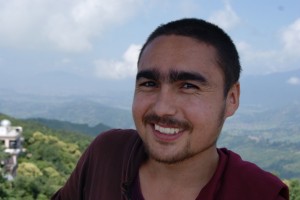
One of the reasons for its rising popularity is its proximity to Kathmandu. My taxi driver informs me that some tourists don’t even bother to get into Kathmandu town – they come here directly from the airport itself. The trip takes hardly half an hour. Being over two kilometres above sea level, from Nagarkot the Himalayas are visible on a clear day. As dusk fell, I could see the majestic snow-clad mountains in the distant horizon nodding off. The hills around were slowly snuggling under the blanket of clouds.
Tourism was a late-comer in Nepal, making its appearance in the 1960s only. Hence it was only much later the resorts and boutique hotels came up in neighbouring Nagarkot. But today, all kind of creature comforts are available here to suit every budget. I had to make sure that I didn’t get too carried away as I had to catch the sunrise here – something which Nagarkot was famed for. So the next morning, I was up, as were 50 Japanese with clucking Nikons in the main balcony next to mine, at 6am. While I had hardly enough time to pull the bathrobe around me, my neighbours were all dolled up in impeccably tailored suits and jackets – I almost expected them to ask the sun out for dinner soon as it came out. The sunrise in Nagarkot was definitely better than the sunset in Chitwan. Then sunrises are any day better than sunsets. Anywhere.
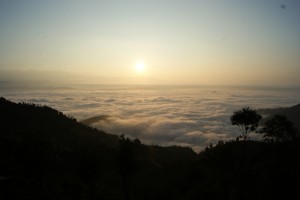
While I stood transfixed and a little startled on the top of the View Tower at the total lack of any semblance between what I saw in the horizon to the shapes in the map I held in my hand, I saw somebody looking at the mountains with a dream-happy smile on his face. Konchok Dorjay was a Buddhist monk with bushy brows over waterfall-green eyes – one hunk of a monk. Hailing from a village close to Ladakh and a descendant of the original Aryans, Konchok came to Kathmandu as a 15-year-old. Completing his masters in Tibetan philosophy he was now gunning for a doctorate. Like me, he too clambered up this rickety tower for the view. An adventurous monk with an eye for beauty.
The land acknowledged the compliment by sending a gentle cool waft of a breeze over us, billowing Konchok’s red and saffron habit. The clouds floated right next to our eyes framing the landscape in an ethereal beauty. Nagarkot rolled on in front of us with its meandering valleys, the rumbling in August monsoon clouds and the whiff of a rainbow conjoining heaven and earth.


